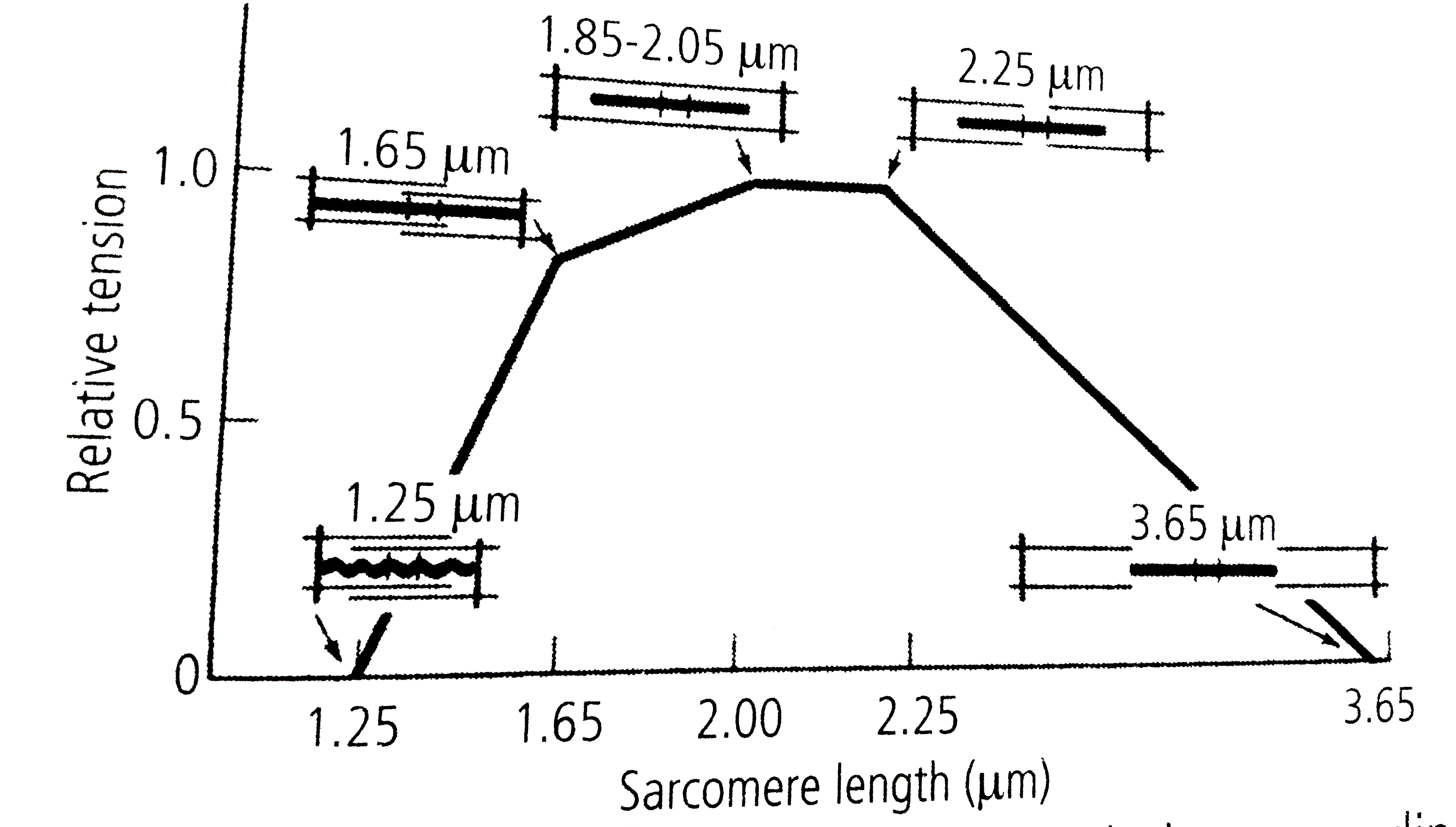The given graph shows length-tension curve for a typical vertebrate sarcomere.

By analysing the graph, what can you deduce regarding the muscle contraction?
(i) Neither the myosin filaments nor the actin thin filaments change in length when a sarcomere shortens or is stretched. Instead, it is the extent of ocerlap between actin and myosin filaments that changes.
(ii) The total tension produced by a sarcomere is proportional to the total number of cross-bridges that can interact with actin filaments, and this number in turn is proportional to the amount of of overlap between thick and thin filaments.
(iii) The tension produced by the muscle is maximal when the overlap between thick and thin filamentss allows the largest number of myosin cross-bridges to bind to actin.
(iv) Tension drops off with increased lenght, because the thick and thin filaments overlap less and fewer cross-bridges can bind.
Tension drops off with decreased length, because thin filaments at the two ends of the secromere begin to collide with each other, preventing further shortening.
(i) Only
(i),(iii) and (iv)
(i),(iii),(iv) and (v)
(i),(ii),(iii),(iv) and (v)
The correct Answer is:D
Step by step video, text & image solution for The given graph shows length-tension curve for a typical vertebrate sarcomere. By analysing the graph, what can you deduce regarding the muscle contraction? (i) Neither the myosin filaments nor the actin thin filaments change in length when a sarcomere shortens or is stretched. Instead, it is the extent of ocerlap between actin and myosin filaments that changes. (ii) The total tension produced by a sarcomere is proportional to the total number of cross-bridges that can interact with actin filaments, and this number in turn is proportional to the amount of of overlap between thick and thin filaments. (iii) The tension produced by the muscle is maximal when the overlap between thick and thin filamentss allows the largest number of myosin cross-bridges to bind to actin. (iv) Tension drops off with increased lenght, because the thick and thin filaments overlap less and fewer cross-bridges can bind. Tension drops off with decreased length, because thin filaments at the two ends of the secromere begin to collide with each other, preventing further shortening. by Biology experts to help you in doubts & scoring excellent marks in Class 11 exams.
Updated on:21/07/2023Topper's Solved these Questions
Similar Questions
Knowledge Check
What is sarcomere ?
APart between two H-linesBPart between two A-linesCPart between two I-bandsDPart between two Z-linesMyosin filaments are localized in
AZ - BandBH-BandCA- BandDNone of the above.The length of sarcomere is about
A2−3μB0.1−0.9μC3−10μD10μ
In the skeletal muscle, the interaction between actin and myosin filaments is triggered by
View SolutionActin filament is made up of
View SolutionAt full muscle contraction the Z-lines attached to thin filaments are almost touching
View SolutionDuring muscle contraction, actin and myosin ffrom
View SolutionThe bond between the Myosin head and thin filament weakens
View Solution
